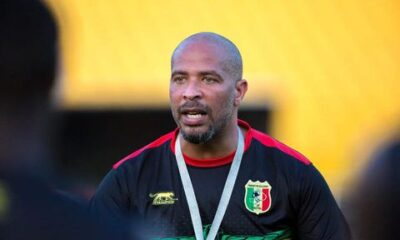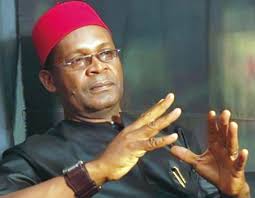Sports
Pelé: Football Legend, Brazil’s ‘National Treasure,’…..
Pelé, the Brazilian soccer legend widely hailed as “O Rei do Futebol,” the king of his sport, the only man to win the World Cup three times, died Thursday at a hospital in Brazil. He was 82.
His death has sent the entire soccer world — and specifically Brazil, the nation who’d nurtured and worshiped him — into a state of mourning. It was as if a national treasure had been lost forever, because, in fact, Pelé was one. The Brazilian government made that official declaration at the height of his powers. It kept him at his Brazilian club, Santos, where he ultimately scored most of his 1,281 goals — a still-unsurpassed, albeit disputed, world record.
By the end of his 21-year professional career, Pelé had become an international icon, perhaps sport’s first truly global superstar. His late-career stint in New York even helped popularize soccer in the United States. But he was, first and foremost, Brazil’s.
He was a boy from a São Paulo state slum, one of thousands in a soccer-crazed country reared on dirt fields, often without shoes or an actual soccer ball, but with like-minded friends and dreams. He grew into an artist and assassin — before he could even grow into a man. At age 17, he led Santos to a league title with a still-standing-record 58 goals. Then he boarded his first airplane, touched down in his first foreign country, and scored six times in three World Cup elimination games to lead his nation to its first world title.
After his second of two goals in that 1958 final, emotions overwhelmed him. He thought back to his family, some 7,000 miles away. “Did they know that we were champions?” he wondered, innocently. Upon returning home, he got his answer. Lights, flying papers and joyous humans lined central streets. Some fought through helmeted guards to pat young Pelé on the head. Others climbed trees to get a glimpse.
Pelé’s fame soon spread far and wide. His rise coincided with the Golden Age of air travel, and with an international television broadcasting boom. His talents became transportable across time and space, liable to hypnotize anyone. His face, beaming off billboards, seemingly ubiquitous on popular TV channels, became recognizable everywhere.
At his first World Cup in Sweden, pale locals had merely been fascinated by his dark skin. By the time he arrived in Mexico for the 1970 World Cup, he toted commercials, cachet and unprecedented celebrity. When he won it, as part of the most revered international soccer team ever, fans and journalists swarmed. Even an Italian opponent sprinted toward him and tugged the iconic yellow No. 10 jersey off his back. Even rivals were mesmerized by his greatness.
“I told myself before the game, ‘he’s made of skin and bones just like everyone else,’” Italian defender Tarcisio Burgnich said after the 1970 final. “But I was wrong.”
He was made of magic, of captivating quickness and spontaneous skill, of audacity and technique and intuition. Only a fraction of it has survived on highlight reels. Visual evidence of Pelé’s favorite goal, for example, does not exist. His genius has largely been preserved by legend — and therefore eclipsed, in the eyes of younger generations, by that of Cristiano Ronaldo and Lionel Messi.
But Pelé’s contemporary preeminence was undisputed. Various organizations named him the greatest athlete of the 20th century. In the 1960s, some believed him to be the most famous person on the planet. Popes, emperors and presidents sought his company. Companies sought his endorsement. Admirers everywhere sought whatever they could get. “In some countries, they wanted to touch him. In some, they wanted to kiss him,” a teammate once recalled. “In others, they even kissed the ground he walked on.”
He made his opponents want to applaud. He made Just Fontaine, the record-breaking French striker, want to hang up his boots. To Johann Cruyff, the Dutch midfield maestro, “Pelé was the only footballer who surpassed the boundaries of logic.” To Romario, the 1994 World Cup-winning Brazilian striker, Pele was “like a god.”
Yet he was also mortal and fallible. He wasted riches on ill-advised investments. He submitted to an awkward second career as a vagabond ambassador and pitchman. He had affairs, divorced twice, and fathered multiple children out of wedlock. He refused to recognize one of them, Sandra Machado, even after she wrote an emotional book about his rejection and sued to prove that she was, in fact, his daughter.
Pelé was, in a nutshell, both divine and intensely human.
From Edson Arantes do Nascimento to Pelé
The boy who’d become king was born Edson Arantes do Nascimento on Oct. 23, 1940, in Tres Coracoes, a modest municipality in southeastern Brazil. He was raised 300 miles to the west in Bauru by his parents, Celeste Arantes and João Ramos do Nascimento, a housewife and a professional soccer player. Dad taught little Edson the sport.
They initially called him “Dico.” The nickname that stuck, “Pelé,” was a schoolboy creation. Edson’s classmates derived it from his mispronunciation of “Bilé,” a pro goalkeeper. Edson initially hated the name. “On one occasion, I punched a classmate because of it,” he’d later recall. He eventually came around.
He honed his skills, meanwhile, on dusty pitches surrounded by neighborhood companions. When they didn’t have a ball to kick about, they made one, perhaps by stuffing a sock with newspaper and tying it tight with a string, or perhaps by converting a grapefruit.
Pelé’s family subsisted on necessities. His father’s soccer salary was meager. Pelé, the oldest of two children, supplemented it by working in tea shops, or cleaning shoes at the local train station. Then, in 1956, at age 15, his youth coach took him to Santos for a tryout, and everything changed.
He signed a contract. He scored on his debut. Over the two years that followed, he became a bona fide star. Adolescence chiseled his body. Martial arts training sharpened his balance and agility, the attributes that would propel him past defenders at will. In 1958, Brazil took him to the World Cup despite a pre-tournament injury that ruled him out of the first two games.
In Sweden, life at Brazilian base camp was calm. It was “quiet,” Pelé recalled, “and my thoughts could soar.” He bonded with older teammates. They played darts, went fishing, uninterrupted by ravenous locals. Relatively few in Europe knew the boy from Bauru by name.
Then they turned on their black-and-white television sets. They sat down to watch Brazil, perhaps for the first time, on soccer’s biggest stage. They saw a skinny 17-year-old playing with imagination and verve, running circles around seasoned veterans, flicking balls through their legs.
He scored the only goal of a 1-0 quarterfinal victory over Wales, then a semifinal hat trick against France. A few days later, he bamboozled Sweden, popping a ball over a helpless defender’s head and volleying it home. His second of two goals that day, a soaring header, sealed a 5-2 Brazilian rout. And in that moment, from São Paulo to Sweden, from London to Lisbon and many places in between, Pelé became Pelé.

‘Football has become ugly’
Before long, European giants came calling. Soccer, at the time, wasn’t the Eurocentric commercial behemoth that it is today. But the likes of Juventus, Real Madrid and Manchester United carried sway. They approached Pelé and Santos with seven-figure offers. Santos accepted one from Inter Milan. Pelé allegedly signed a contract with the Italian club. Then its chairman, Angelo Moratti, received a phone call.
“On the other side of the phone,” Moratti’s son would later recall, “there was a man very worried for his safety.”
It was Santos’ chairman. News of Pelé’s impending transfer had reached the public. “As soon as it was heard in Brazil,” Massimo Moratti said, “people went wild against the leaders.”
The only solution, given Pelé’s importance to Brazil, was to tear up the contract.
The Brazilian government soon declared him a national treasure, and national treasures don’t become exports. Pelé stayed at Santos, winning South American titles in 1962 and 1963. His star power also allowed Santos to tour Europe, sometimes merely for exhibition matches. There were also Intercontinental Cups, newly conceived contests between the South American and European champions. Pelé and Santos won those, too, toppling Benfica in ’62 and AC Milan in ’63.
Throughout the ’60s, though, fame began to wear at him. Pelé began traveling more for commercial engagements than for sport. It strained his relationship with Rosemeri dos Reis Cholbi, whom he married in 1966, but eventually divorced in 1982. Pelé later admitted to sleeping with other women while they were a couple, both before and after they wed.
Soccer also began to wear on him. Opponents who couldn’t stop him turned to illegal measures. Crunching tackles. Bruising hip-checks. Thwacks to the shin. “Football has become ugly,” Pelé said at the time. A fluke injury knocked him out of the 1962 World Cup, which Brazil went on to win without him. It was the brutish tactics, on the other hand, that knocked him and Brazil out in 1966.
He’d entered that World Cup a 25-year-old megastar. He exited in pain, after three games and two losses, with a gold necklace and black towel draped over his bare torso. He later stared out the window of a team bus, chin in hand, face sullen. Soccer’s joy had been stolen.
In the immediate aftermath of the defeat that sent Brazil home, he told a reporter: “I don’t intend to play in a World Cup again.”
Back on top of the world, at age 29
Four years later, internal and external forces dragged him back on those words. “I was really torn. I didn’t want to play in the ’70 World Cup,” Pelé said in an interview for a recent documentary. “I didn’t want to repeat what had happened in [1966]. I wasn’t sure. I was worried.”
But Brazil yearned for him. Fans yearned for him. The country’s fascist government yearned for him, too. The military dictatorship, which began terrorizing Brazilian citizens in 1968, pressured Pelé to return to a team that it used to promote patriotism and nationalism.
Ultimately, though, “I also missed it,” Pelé said of soccer’s pinnacle. “I just wanted to be remembered.”
So he returned, and the sport celebrated, and savored its final glimpses of the king. Brazil rolled through the tournament. Pelé wowed, with goals and eyes-in-the-back-of-his-head assists. He even wowed with two misses. During a group game, he picked his head up in the center circle, saw a Czech goalkeeper wandering, and let fly from midfield. During a semifinal, he skated around a Uruguayan keeper without even touching the ball. He sent both shots wide of gaping goals, as if to offer necessary reminders that, yes, he was earthly.
He’d sometimes doubt his own ability to conjure brilliance out of nowhere. He’d glance at flag-waving Brazilian fans chasing the team’s bus, and think about the millions watching on small TVs and in public squares back home, and get nervous. Before the 1970 World Cup final in Mexico City, his emotions stirred. He prayed.
Then, 18 minutes in, he rose above Italy and headed Brazil into the lead. Late in the second half, when he received the ball at the top of the box, the universe seemed to freeze and hold its breath. Pelé casually turned, fed a pass to a rampaging fullback in stride, and capped Brazil’s 4-1 triumph.
As the final whistle neared, fans, photographers and Italian players began positioning themselves for the storm. When the whistle trilled, they sped toward him, and hoisted him onto their shoulders, and carried him around a chaotic Estadio Azteca field. Everybody privileged enough to witness Pelé’s final global act wanted a piece of the newly crowned three-time world champion, the only one soccer has ever known.
And Pelé himself? He was overjoyed. He was also only 29 years old.

‘O VIVA O REI’
Pelé retired from the sport in 1974. He returned a year later, reportedly in need of money. A business deal had backfired and left him $1 million in debt. The New York Cosmos agreed to pay him a then-whopping $7 million over two-plus years to play soccer, but also to promote the sport in one of its great untapped markets, the U.S.
Pelé did both of those things. Americans flocked to his introductory news conference and to his games. In his first month stateside, 20,000 fans crowded into a 12,500-seat stadium in Boston. Some of them mobbed Pelé after a goal and accidentally injured him, sending him off in the 79th minute on a stretcher.
Pelé recovered, and two years later led the Cosmos to a North American Soccer League title in his final professional season. They then sold out Giants Stadium for one last curtain call, a friendly between the Cosmos and Santos. Pelé played a half for each team. During the second, rain began to fall. The following day, a Brazilian newspaper headline proclaimed: “Even The Sky Was Crying.”
Pelé did not, however, disappear from public view. The financial problems that led him to America followed him into retirement. He cycled through managers and investments, each finding a new route to mistrust or collapse. A construction venture went bust. A sports marketing company descended into scandal. Pelé, seemingly seeking to recapture lost earnings, began shilling a range of multinational products, including Subway, Coca-Cola, MasterCard, Viagra, Nokia, Petrobras, Hublot, Santander, Volkswagen, and his own coffee brand, Café Pelé.
He delved into politics and diplomacy as well. He spent three years in the ’90s as Brazil’s first minister of sport. He worked as an ambassador for UNICEF and the United Nations, advocating on behalf of the environment and against rampant corruption in Brazil.
Yet when Brazilian streets filled in 2013 to protest that corruption, and object to the government’s spending on the 2014 World Cup instead of on much-needed social services, Pelé initially urged citizens to “forget all this commotion … all these protests.”
He later corrected himself, tweeting that he was “100% in favor of this movement for justice in Brazil.” Critics, though, argued that his efforts to help countrymen struggling in poverty had been far too superficial and sporadic. They noted that his initial comments fell in line with his long history of cozying up to authority in the name of soccer. Late in his playing career, after the Brazilian government fell to a military coup, and as the dictatorship cracked down on freedoms, Pelé posed for pictures with the dictator, Emilio Medici, and sought him out for a beaming hug after winning the 1970 World Cup.
His missteps outside of soccer also extended to romantic relationships. In the early 1980s, at age 40, as his first marriage officially moved toward divorce, he began dating a 17-year-old model, Xuxa. Their relationship collapsed after several years when, according to Xuxa, Pelé began cheating on her. Almost a decade later, in 1994, he married Assíria Lemos Seixas, a psychologist and singer, but they divorced in 2008.
In 2016, Pelé wed Marcia Aoki, a Japanese Brazilian entrepreneur. They remained together as his health deteriorated. Multiple hip surgeries left him hobbled and, according to one of his sons, depressed. In recent years, he needed a walker or wheelchair to get around.
Then, in the summer of 2021, doctors found a tumor on his colon. They removed it, but Pelé spent the better part of a month in and out of a São Paulo intensive care unit. He began chemotherapy.
His health further deteriorated earlier this month, with the soccer world gathered in Qatar for the 2022 World Cup. He watched from his hospital bed as an upbeat group of Brazilian players tried to follow in his footsteps. After they danced into the quarterfinals, they posed with a “Pelé” banner to broadcast their well wishes. “All of us here are sending you our love,” head coach Tite said.
And that included non-Brazilians. “Pray for the King,” French superstar Kylian Mbappé tweeted.
Pelé responded on Dec. 8. “I’m happy to see you breaking another one of my records,” he told Mbappé. He lived to see one of soccer’s greatest games, the 2022 World Cup final, a week later.
He died 11 days later, his manager confirmed, with family by his side. Roughly an hour after his passing, a representative sent a brief message from his Twitter account: “Inspiration and love marked the journey of King Pelé, who peacefully passed away today. Love, love and love, forever.”
His survivors include Aoki; his sister, Maria Lucia Nascimento; and at least six children: Kely Nascimento, 54, Edson “Edinho” Nascimento, 51, and Jennifer Nascimento, 43, from his first marriage; twins Joshua and Celeste Nascimento, 25, from his second marriage; and Flavia Kurtz, 53, from an extramarital affair.
He is also survived by enduring memories, by millions who savored his greatness, perhaps even by some who, on a radiant summer day 50 years ago, stood on tiptoes for one last glimpse. Over 140,000 fans pushed into the Estadio Maracana that day for Pelé’s final international game with Brazil. As he paraded around the field, flanked by snapping cameras and worshippers, spellbound by tears, they chanted a simple request: “Stay! Stay!”
And a plane flew overhead, carrying a banner with four simple words: “O VIVA O REI.”
“LONG LIVE THE KING.”


 Top Stories23 hours ago
Top Stories23 hours agoZacch Adedeji @ 47: Celebrating a Man Of Exceptional Grace, Excellence

 Top Stories23 hours ago
Top Stories23 hours agoHow Fubara missed the opportunity to settle with Wike – Rivers APC chairman

 Top Stories24 hours ago
Top Stories24 hours agoCabal in Tinubu’s goverment more dangerous than Buhari’s – Dalung

 Sports24 hours ago
Sports24 hours agoEric Chelle: 9 Things To Know About Super Eagles New Coach

 Politics24 hours ago
Politics24 hours agoNigerian Police Cybercrime Unit Recovers ₦8 Billion, Named Best In Africa

 Entertainment24 hours ago
Entertainment24 hours agoWhy I Almost Got Sacked As “who Wants To Be A Millionaire” Host – Frank Edoho

 News24 hours ago
News24 hours agoNnamdi Kanu’s lawyer rejects Nigerian govt’s request to resume trial

 Top Stories18 hours ago
Top Stories18 hours agoStop Dreaming Of Presidency, Tinubu Till 2031 – Igbokwe Tells Obi And Atiku







